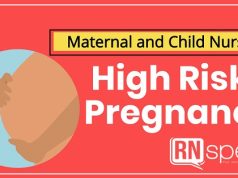Puerperium from the Latin terms, puer meaning “child” and parere which means “to bring forth”, pertains to the point of time where maternal changes happen after the delivery of the baby. According to Pilliterri (1992), it involves two essential venues for maternal and child well- being, referring to both retrogressive and progressive processes. Retrogressive in terms that, the uterus and the vagina return to their non pregnant states or commonly known as involution and progressive, by which production of milk, resumption of normal menstrual cycle and beginning of assumption of parental role happen. This stage could be both critical and significant for the mother, thus, her physical, emotional and psychological aspects should be dealt with much fragility.
During prenatal and intrapartum phases, the woman and her family may experience varying degrees of momentous emotions and anticipatory feelings- how much more during the postpartal period when the woman’s efforts in preparing for delivery and her exhaustion in labor are replaced with a healthy and cute new member of the family.
Postpartum and the changes in the mother’s health could branch out to be both normal and complicated cases. It could involve her physical and psychological health and as well her family’s preparedness in dealing with the new member of the family. As first in line in providing maternal care, we should be familiar with what nursing considerations should we include in our plan of care.
Let us first deal with the physical changes during this phase since postpartum complications are sometimes unavoidable. This includes the following:
- Check for uterine contraction and fundal height
- Evaluate the amount of blood loss which should not be more than 500cc for the first 24 hours after childbirth
- Assess the color, duration and composition of lochia; it should not have a foul odor and large blood clots. It should also follow the pattern (rubra to serosa to alba)
- Check for bladder distention and ask the mother to void if able to
- Strictly monitor fluid intake and output
- Assess and monitor her vital signs ( hourly until stabilized and then every four hours)
- Assess for breast engorgement and initiate breastfeeding to alleviate pain and discomfort
- Provide health teachings regarding proper positioning and importance of breastfeeding to both mother and child
- Promote rest during early postpartal period
- Encourage client to change positions periodically then to dangle in bed, and lastly to ambulate later on to prevent constipation and venous stasis.
- Inspect episiotomy and provide perineal care; also teach client to do perineal self- care
- Promote adequate fluid and nutritional intake as advised
- Administer medications as prescribed by the physician
Postpartal clients may also experience psychological and emotional changes during this phase. So, the following nursing considerations are:
- Encourage mother and child bonding through early skin- to- skin contact
- Client may undergo the three phases of puerperium according to Rubin (1977): taking-in, taking- hold, and letting- go phase; so, be careful not to rush or delay the client from experiencing the phases.
- Allow and encourage family participation in taking care of the baby through sibling visitation
- Room – in the baby with the mother to promote faster development of mother and child relationship
- Encourage verbalization of feelings and concerns about parental role and responsibilities
- Support system during this phase is very essential to prevent client from having blues
- Baby blues may happen to some clients so, explain to her that these are due to hormonal changes and assure her that sudden crying is normal.
- Evaluate psychiatric history and presence of signs and symptoms of depression since relapse may occur during this critical phase.
- Referral for postpartum psychosis, if present.
- Maintain a therapeutic relationship with the client through offering self and open communication.
Nursing problems may range from acute pain to fluid volume deficit and altered peripheral perfusion and from health seeking behavior to altered parental role and potential for enhanced parenting. These nursing considerations are done to provide general plan of care for a client in postpartal period. However, it should be implemented according to client’s needs and individually to promote holistic approach of nursing care.
Being a mother is not easy as what most people will say. You cannot tell what it is really to become one if you will not be. The pride of being a mother can never be replaced by anything since it is the most precious gift from God laid for women. Being one does not stop from childbirth but instead, it is a continuo compassionate process of nursing as child rearing becomes challenging as the child matures. It is caring in nature mirroring what a mother could be and at the same a brilliant way of being a human.
Reference:
Pilliterri , A. (1992). Maternal and Child Health Nursing: Care of the Childbearing and the Childrearing Family. Philippine Edition. Merriam and Webster, Inc.







